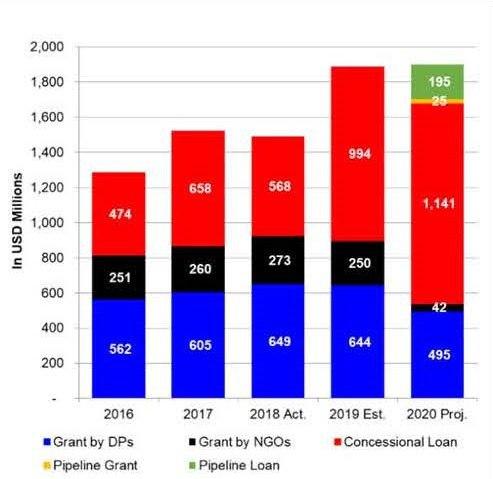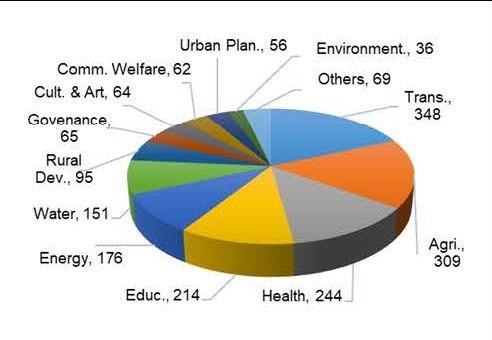|
Promoting Development Effectiveness in Cambodia
What is the role of development partners in supporting the NSDP?
The NSDP is intended to guide resource allocations to priority sectors and to promote the integration of development assistance with national systems. It is therefore of strategic importance for development partners to align their assistance with these national priorities and systems. Official Development Assistance (ODA) is a major source of financing of development programs of the Royal Government of Cambodia and has contributed to the implementation of major public development projects in Cambodia (see 2018-2019 Development Cooperation and Partnerships Report) (Khmer Version here) . ODA has been highlighted by the Government as an important source of financial and technical input to attain the NSDP objectives and the Cambodia Sustainable Development Goals.
* Click on the images to zoom in
Development partners' support is provided as investment and technical cooperation resources to strengthen central Government planning and budgeting functions; to support major reforms such as Public Administration Reform, Public Financial Management Reform and Sub-National Democratic Development Reform; to priority sectors such as health, education, agriculture and rural development, infrastructure, and governance; to sub-national authorities and service providers; and to non-state actors. In each form of support, development partners are requested to adhere to the national policy framework for managing development assistance and to make use of national coordination and dialogue mechanisms (see below). Information on development partner support can be accessed via the Cambodia ODA Database.
What is the experience of implementation to date?
The Analysis presented in 2018-2019 Development Cooperation and Partnerships Report highlighted a strong evidence of the RGC’s commitment in maximizing ODA resource mobilization and continued collaboration with its development partners to deliver results. Major ODA trends documented in this report have showed that:
• The overall volume of ODA in 2019 increased to USD 1.9 billion. Grant levels have remained relatively stable while the loan share of ODA has increased to 53%.
• The aid/GDP ratio in 2019 has declined to around 7% and is expected to further decline to 5.3% in 2021. This reflects the RGC commitment to transform the economy based on a new growth model while meeting more of its development expenditures from the national budget.
• Significant ODA disbursement growth is seen in the infrastructure and economic sectors. This is in line with RS-IV priorities that, through the IDP, focus increasingly on managing the economic transformation and modernization programme.
• The development effectiveness agenda has recorded some major successes, however more work is needed to strengthen and use national systems as well as to formulate and deploy results frameworks across all forms of development cooperation.
• The RGC’s work to mobilize ODA and partnerships through the new DCPS will promote a results-based approach linked to the JMIs and PFM reforms. It also anticipates the commencement of LDC graduation.
Building on development effectiveness principles and a solid track record of progress, the RGC will continue to guide the RS-IV towards the attainment of the 2030 development agenda. Now that the NSDP and DCPS are in place for the current planning period, emphasis must now turn fully towards effective implementation of national policies and plans. This effort to lead on implementation and the achievement of results will require that the DCPS be utilized for impact, sustainability and accountability in the use of external resources.
CRDB/CDC is therefore fully committed to continue to take a leadership role in the mobilisation and management of external cooperation, working closely with development partners through the coordination of all partnerships at all levels.
| |||||||||


